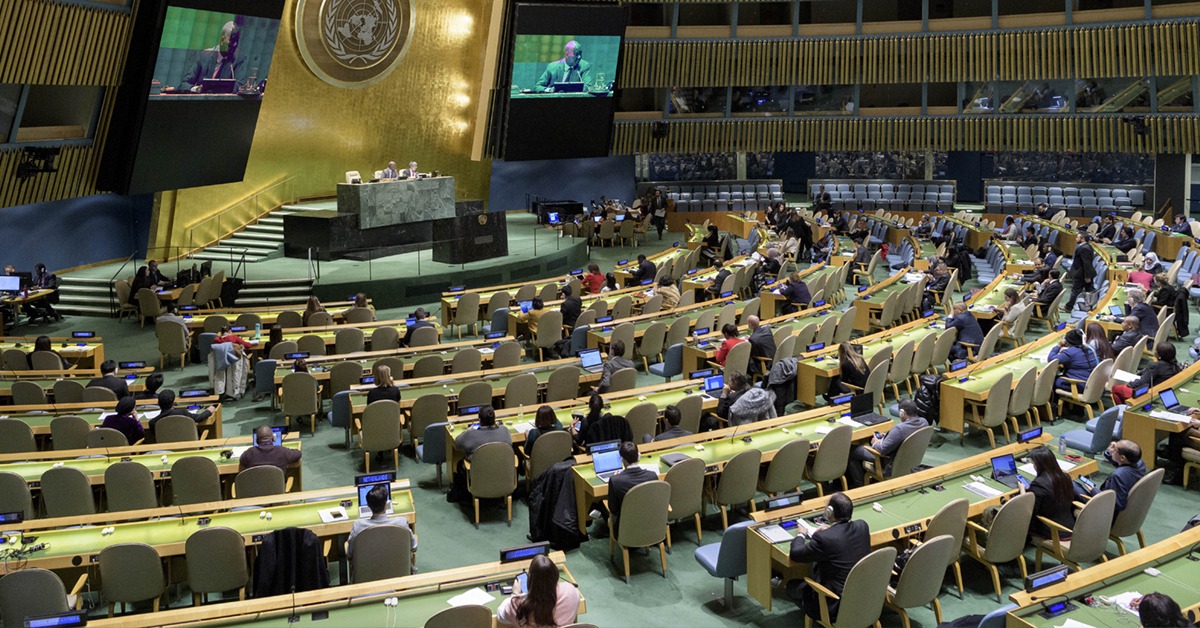From 13-27 September, the United Nations are meeting for their General Assembly at the UN headquarters in New York. As working with the UN is so fundamental to our mission, we wanted to share with you how we do this and how this brings about change. Yesterday, I outlined our work with the Human Rights Council. In this blog I focus on how we engage with the treaty body process.
Working with partners in the UN to bring about the global elimination of institutional care of children requires several different approaches.
How the treaty body process can help to eliminate orphanages
The treaty body process is a little different to the Universal Periodic Review (UPR). Each UN human rights convention has a committee of experts, who review each country that has signed the convention. This happens once every 5-7 years. At the end of the review process, the Committee makes recommendations to each country on how they can improve human rights under the relevant convention.
We engage two UN Committees to help countries advance their deinstitutionalisation practices:
- The UN Committee on the Rights of the Child – linked to the Convention on the Rights of the Child (UNCRC)
- The UN Committee on the Rights of Persons with Disabilities – linked to the Convention on the Rights of Persons with Disabilities (UNCRPD)
These two conventions are the most relevant to us. The UNCRC is the main convention that provides the global framework for the care, protection and participation rights of children. The UNCRPD is important because in many countries children with disabilities are overrepresented in institutions and protecting their rights is paramount.
Children with disabilities are overrepresented in institutions
1 in 3 children in institutions are disabled
P.S. Pinheiro, ‘World Report on Violence against Children’, United Nations Secretary General’s Study on Violence against Children, 9/27, 16/53/57/58/59 (2006)
The Convention on the Rights of the Child and Ukraine – a case in point
Over the past three years we’ve provided three alternative reports to the Committee on the Rights of the Child in anticipation of the review of Ukraine. The review was delayed for two years due to COVID, and took place six months after the 2022 invasion by Russia.
In our three reports, we documented:
- the number and conditions of children in Ukraine’s vast network of over 700 institutions,
- the over diagnosis of very young children leading to their institutionalisation
- a list of questions about the care and protection of children in all forms of alternative care during the conflict.
The session was very informative, with the government providing valuable insights into the child protection system. The Committee noted that the system of institutions was in need of urgent review and may not be in keeping with international human rights obligations.
Children with Disabilities are grossly overrepresented in orphanages
The other treaty body that we work with is the UN Committee on the Rights of Persons with Disabilities. This is because children with disabilities are significantly over-represented in institutions around the world.
Like the Child Rights Committee, the Committee on the Rights of Persons with Disabilities reviews signatory countries’ performance every few years. It has also produced guidance on how signatories should approach deinstitutionalisation. Alongside many of our partner organisations, we fed into those guidelines, drawing on our extensive hands-on experience of delivering child protection system reform over the last 28 years.
Read the Guidelines on deinstitutionalization, including in emergencies (2022)
Including care-experienced young people
As part of the consultation process, we supported a young care leaver with disabilities from Rwanda to speak at one of the global consultations. They shared their experience of growing up in an orphanage, and returning with community support to their own family.
Hard questions lead to real opportunity for change
During August 2022, the Committee on the Rights of Persons with Disabilities held a special session on the situation in Ukraine and the Russian aggression. Neighbouring countries including; Bulgaria, Italy, Finland, Latvia, Lithuania, Turkey, Republic of Moldova and Belarus, as well as the European Union also attended.
We provided a set of questions and background documents to the Committee about the situation of children with disabilities in institutions in Ukraine. As part of the questions put to the Government of Ukraine, the Committee asked:
- Were international funds being used to renovate or build institutions?
- Did the Government of Ukraine have sufficient plans in place for the care and protection of all children with disabilities in institutions?
- Was there a system in place to monitor all children with disabilities from institutions – who either left the country, are internally displaced or are being cared for in neighbouring countries’ alternative care systems?
This information we got from this was crucial. Without the evidence and expertise provided by our local teams in each country, it would be so much harder to hold countries to account like this on progress towards the aims of the conventions.
Following the session, the Committee issued a report on their discussions. Civil society organisations, the wider UN system and humanitarian organisations are using the report to help them prioritise areas of change and immediate actions. The Ukraine Government is also using the report to understand its obligations and to adjust policy and practice. Critically, it’s using the report to begin to systematically monitor the number of children with disabilities in institutions, through the development of a comprehensive child protection system.
In the final part of this series, I’ll be explaining how we work to ensure that children’s voices are heard at the highest level, so the systems and decisions which most affect their lives have some level of accountability to them.
Part 3 – Accountability to children
Read my final blog about how we aim to centralise the voice and experience of young people in our advocacy
Our work at the United Nations Part 3 – building in accountability to children
